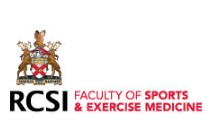Medial Patellofemoral Ligament Reconstruction (Patella Instability)
Medial Patellofemoral Ligament Reconstruction (Patella Instability)
What is the medial patellofemoral ligament (MPFL)?
The kneecap (patella) is designed to help the muscles on the front of your thigh to straighten your leg. As you bend and straighten your leg, the patella glides in a groove at the end of your thigh bone (femur) known as the trochlear groove of the femur. Sometimes the patella can come out of the groove, with or without an injury to the knee. This can lead to ongoing recurrent patella instability, with a feeling that the patella may slide out of the groove when the knee moves or complete dislocations.
To aid stability of the patella there are a number of soft-tissues that attach to it. The MPFL attaches the kneecap (patella) to the inner part of the knee. It helps stabilise the kneecap as it moves, preventing it from moving or dislocating outward.
What is MPFL reconstruction?
Surgical reconstruction of the MPFL is carried out under a general anaesthetic. It is a minimally invasive procedure and will require only a few small incisions on the front and side of your knee. A small camera will be used to look inside your knee and to repair any other damage that may be found in the joint.
One of your hamstring tendons (from the muscles on the back of the thigh) will be used to reconstruct the new ligament and will be harvested through one of the small incisions that have been made. The new ligament is secured by passing it through a small tunnel made on the inner edge of the patella and then fixing it to a short tunnel in the inner side of the femur. X-rays are taken during the operation to confirm correct placement of the tunnel in the femur. Great care is taken not to under or over tighten the ligament so that it can effectively carry out its new job.
Risks of Surgery
All operations involve an element of risk. Those involved in MPFL reconstruction will be discussed with you by Mr Jackson and include:
- Infection (<1%).
- Blood clots also known as a deep vein thrombosis (DVT) and pulmonary embolus (PE) (<1%).
- Numbness of the skin around the wounds.
- Reoccurrence or failure of the graft (5-10%).
- Nerve or blood vessel damage ( < 1 in 1000).
- Patella fracture ( <0.5%).
What happens on day of surgery?
- On admission you will check in at the reception area and be asked to confirm your details for your medical file. A member of the admissions department will accompany you to the inpatient ward waiting area.
- On arrival onto the ward you will initially meet a healthcare assistant who will take your weight and height. This will be followed by a nurse who will complete all the required checks (blood pressure, pulse, etc), allergy status to any medications, medical and surgical history. It is important to give the nurse as much detail as possible regarding your current medical status and if any previous issues with anaesthetics.
- You cannot eat or drink anything for 6 hours prior to surgery so you will generally be fasting from midnight (for a morning operation) or 6am (for an afternoon operation). This includes chewing gum.
- You will meet Mr Jackson and the anaesthetist in the anaesthetic room prior to the operation. The anaesthetist will again ask you all the same questions as the nurse completed on the ward to ensure all information has been provided.
- Once the surgery has been completed, you will wake up in the recovery room and will return to the ward after a period of time.
- On returning to the ward, you may be a little drowsy which is normal. Nursing staff will check in regularly with you and diet will be provided once fit to do so.
What happens for discharge?
A physiotherapist will see you the morning of discharge. They will explain exercises that are to be completed at home and provide confidence for using the crutches. A brace is required for 6 weeks. Education on it will be provided by the physiotherapist.
A member of the nursing staff will change your dressing and provide documentation for discharge. This will include a prescription and wound instructions. Discharge time is approximately 10am.
General advice
Length of stay is one night.
Return to driving is generally recommended at 6 weeks post-surgery once you are off the crutches and feel can safely make an emergency stop.
Flying is not recommended for 6 weeks after surgery (particularly long haul flights of >4 hours) to minimise the risk of a deep vein thrombosis.
Wound is closed with steristrips (paper stitches). This will be clarified by nursing staff on discharge. They will be removed at the 2 week appointment.
Returning to work is generally 6 weeks. This will be discussed with Mr. Jackson at your consultation.
Showering is not permitted until 24 hours after surgery. Cling film can be used to keep the dressing dry.
Follow up:
- At the 2 week appointment, you will meet Mr Jackson’s specialist physiotherapist and practice nurse.
- The physiotherapist will examine the movement of the knee and provide guidance on the next stages of rehab.
- The practice nurse will assess the wound, pain management and provide reassurance in relation to any queries.
- The follow up with Mr Jackson will be booked at this 2 week appointment and will be indicated on a patient by patient basis. This usually occurs at 4 weeks, 6 weeks and 4 months.











